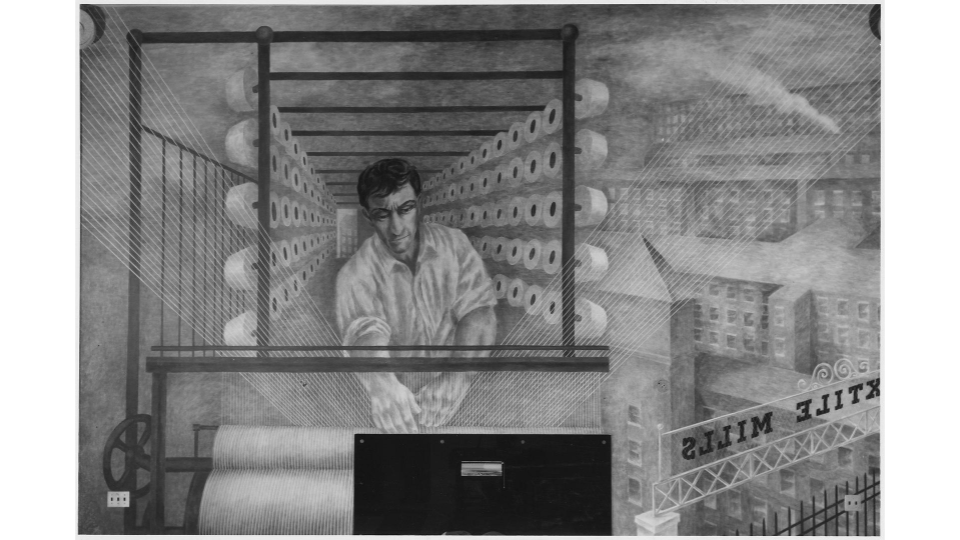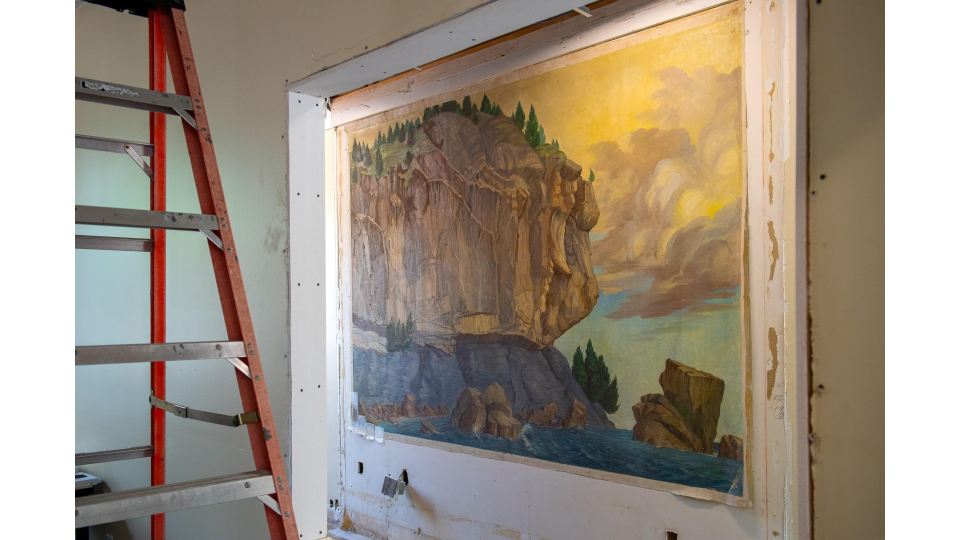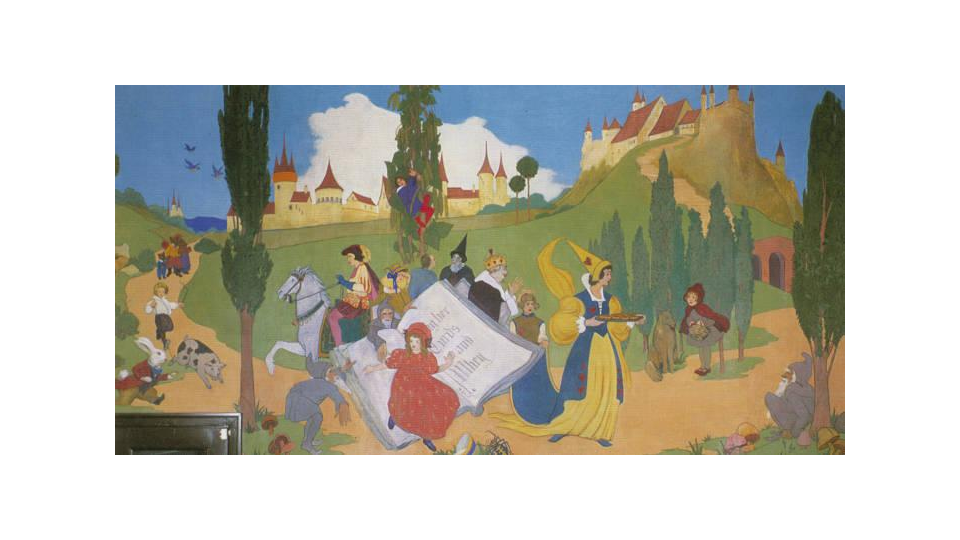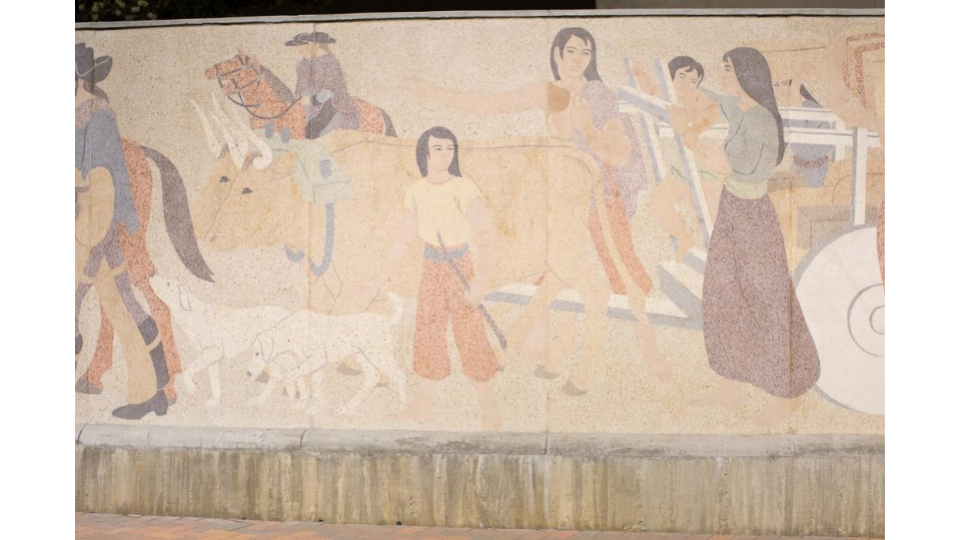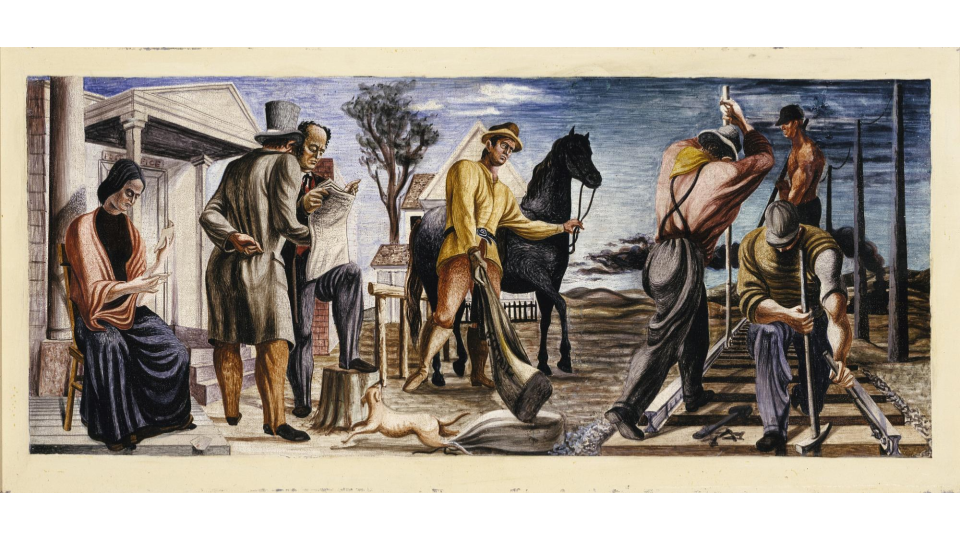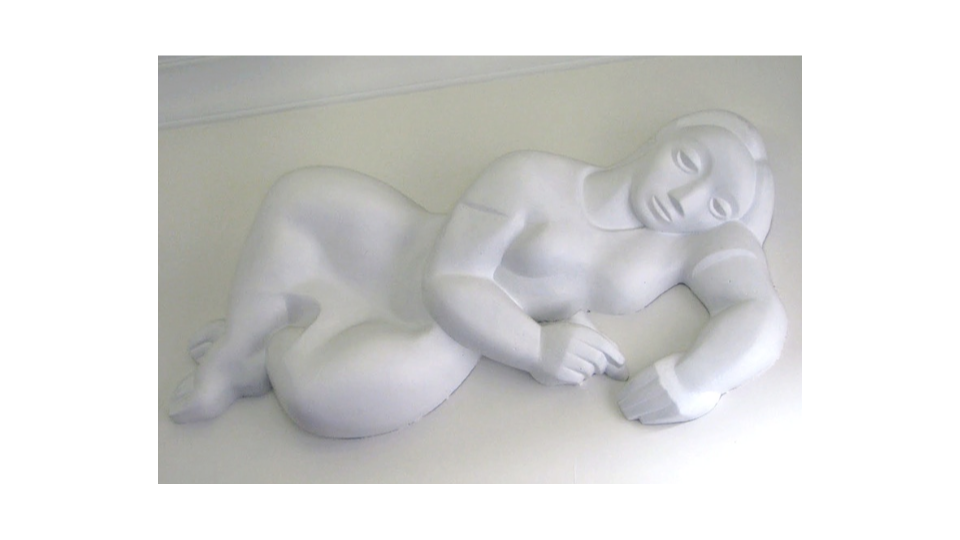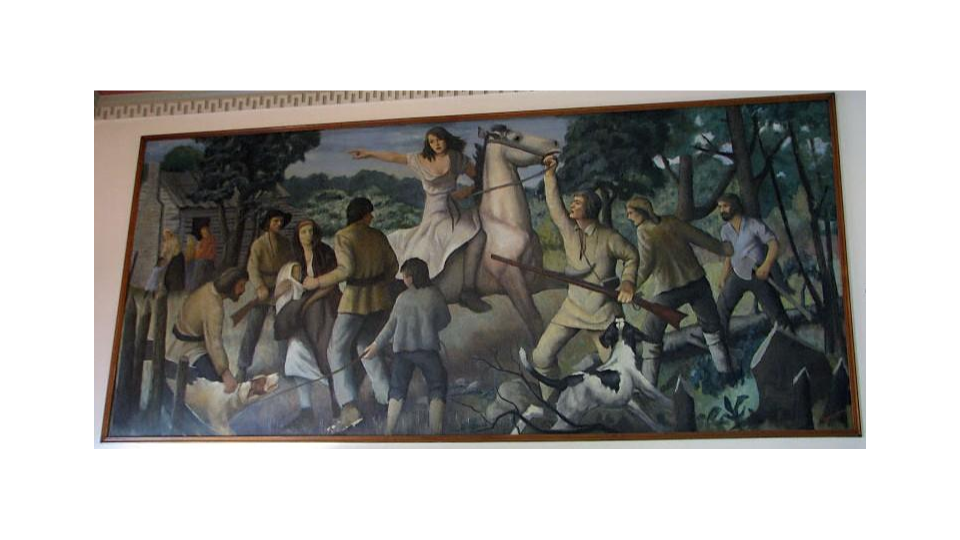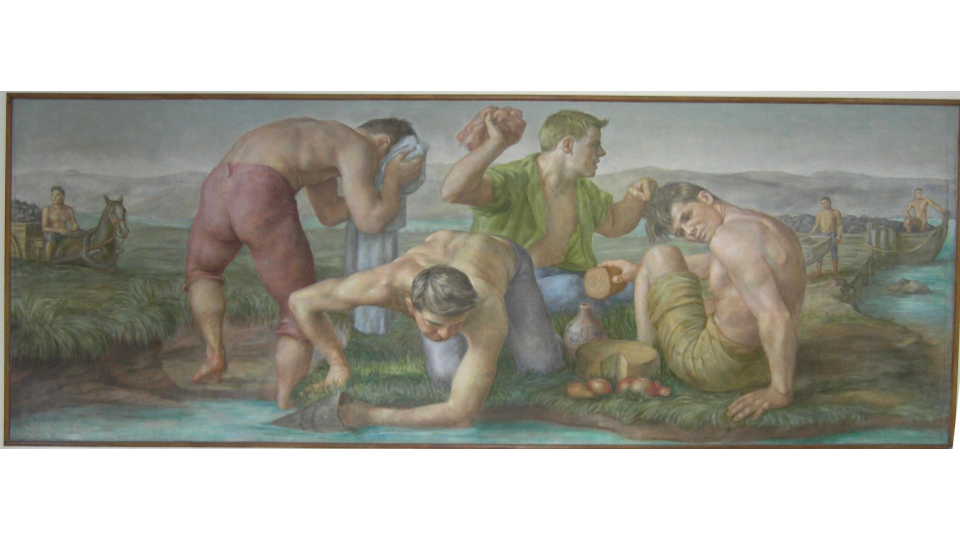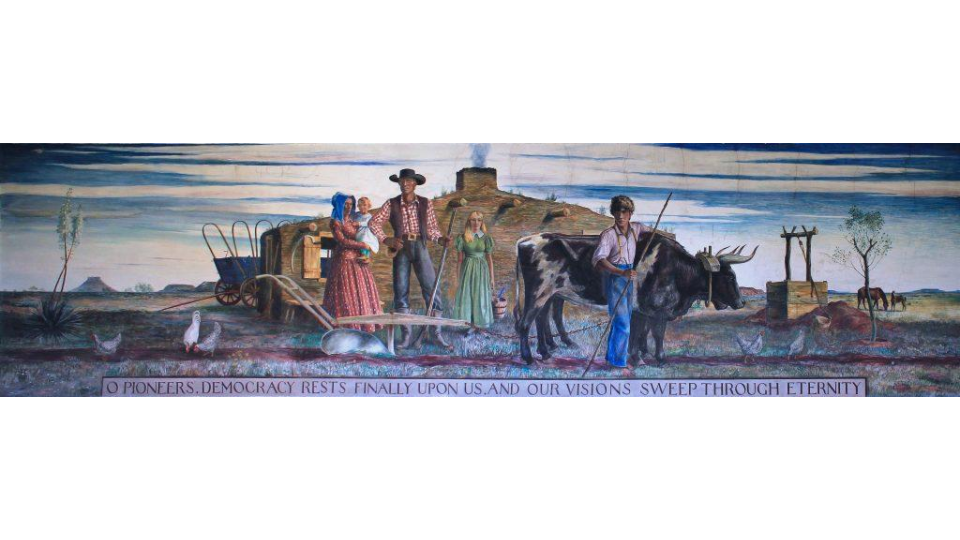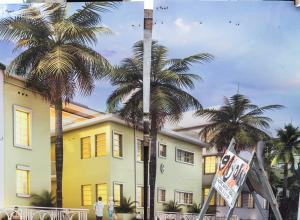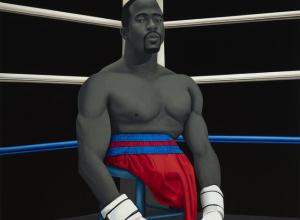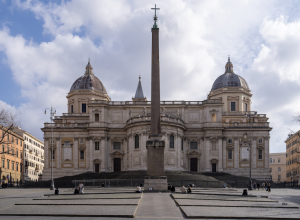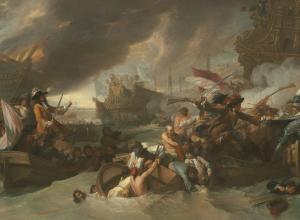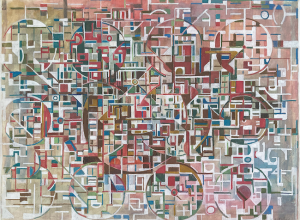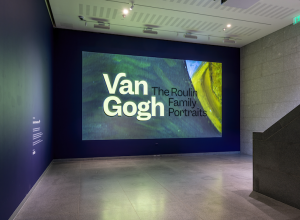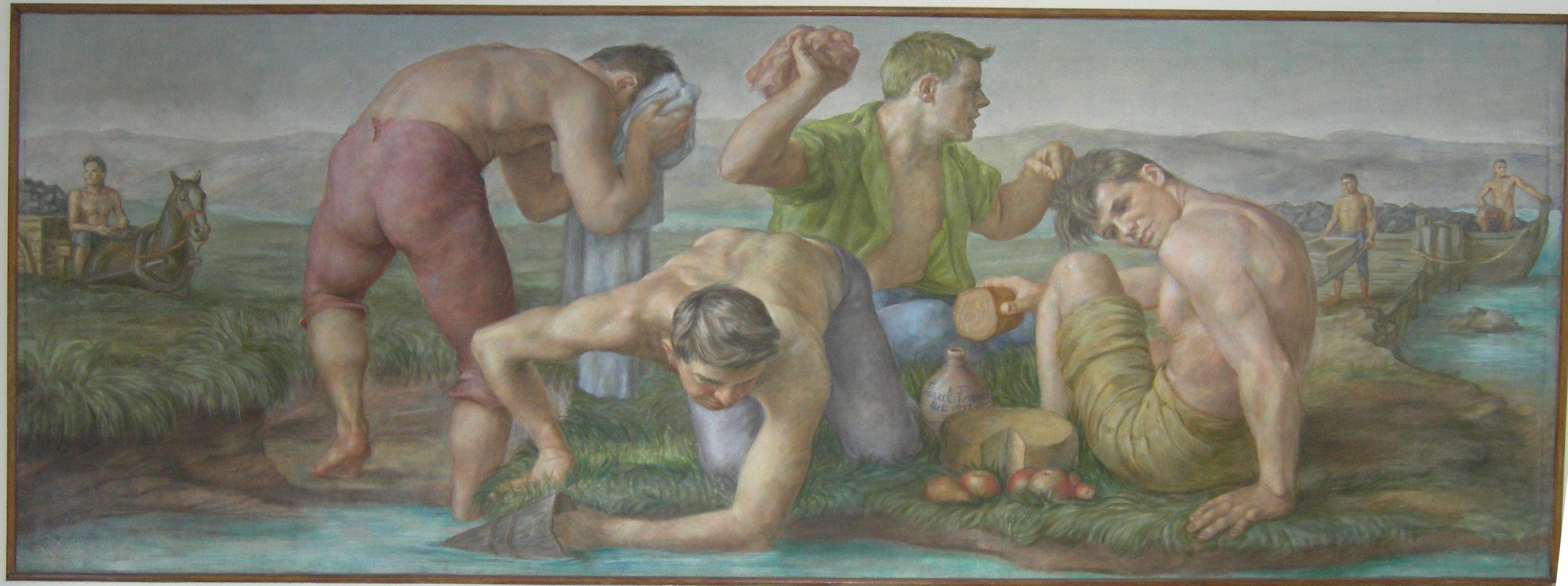
An estimated 225,000 works were commissioned during the depression era under president Franklin Delano Roosevelt’s New Deal and the Works Progress Administration Federal Art Project (WPA), a program designed to put artists to work in paying jobs and to bring art to public places like schools, libraries and post offices where people congregate. Comprehensive records were never kept but artwork done under the program keeps popping up occasionally during building construction, as recently happened at the University of Vermont. In other cases a concerted effort, like that described in the book Art For The People: The Rediscovery And Preservation Of Progressive And WPA-Era Murals In The Chicago Public Schools, 1904-1943 (2002) which brought to light approximately 450 murals in 70 public schools across the city. Artists in every state from Alabama to Washington and Puerto Rico to Hawaii benefitted from the Program.
To address the lack of a complete database of WPA funded art, Gray Brechin, a historical geographer at UC Berkeley founded the Living New Deal project. Like a New Deal Wikipedia they are seeking contributions from anyone who discovers artwork or has documents of any kind related to this great social and cultural moment in American History.




